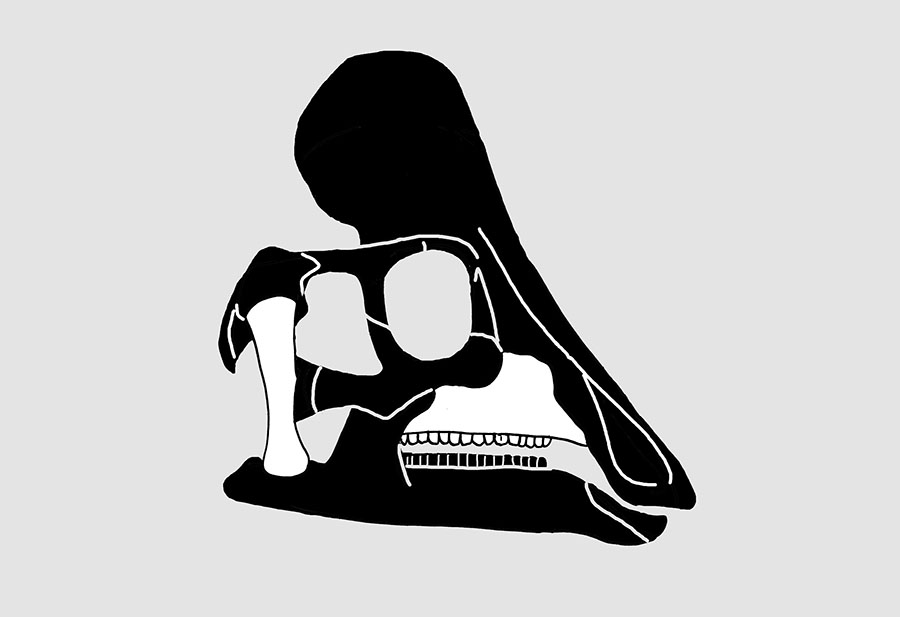
Genus: Canardia PRIETO-MARQUEZ, DALLA VECCHIA, GAETE, & GALOBART,
2013
Etymology: French, canard, "duck"; alluding to the hadrosaurian nature of this
animal (hadrosauroids are also informally known as "duck-billed" dinosaurs).
Species:
garonnensis PRIETO-MARQUEZ,
DALLA
VECCHIA,
GAETE, & GALOBART,
2013
Etymology: In reference to Haute-Garonne, the department in southern France
where this lambeosaurine has been found.
Holotype: MDE Ma3-16
Localty: Tricoute 3 locality of the Aurignac anticline, southwest of Marignac-Laspeyres, Petites-Pyrenees, approximately 65 km southwest of Toulouse, Haute-Garonne Department, southern France.
Horizon: Basal section of the Marnes d'Auzas Fromation.
Biostratigraphy:
Age: Upper Maastrichtian Stage, uppermost Senonian subepoch, Upper Gulf Epoch, Late Cretaceous.
Material: A nearly complete right maxilla.

Canardia garonnensis (modified from PRIETO-MARQUEZ, et al., 2013), Holotype: MDE Ma3-16.
Referred material:
MDE-Ma3-12: Partial left scapula.
MDE-Ma3-15: Partial left maxilla.
MDE-Ma3-17: Left quadrate.
MDE-Ma3-18: Right prefrontal.
MDE-Ma3-19: Partial left surangular.
MDE-Ma3-20: Left humerus.
MDE-Ma3-21: Partial eft scapula.
MDE-Ma3-23: Partial right pubis.
MDE-Ma3-24: Partial left sternal plate.
MDE-Ma3-25: Dentary tooth crown.
MDE-Ma3-26: Partial right dentary dental battery.
MDE-Ma3-28: Articular.
MDE-Ma3-29: Partial right prefrontal.
MDE-Ma3-30: Partial right pterygoid.
REP-LCR (private collection of Dominique Teodori, France): Partial right and nearly complete right maxilla.